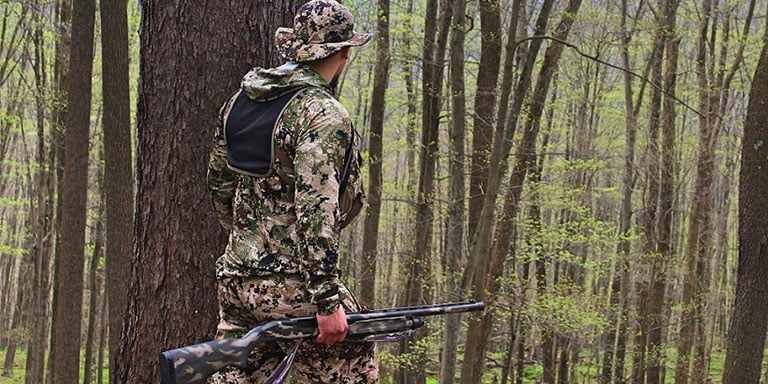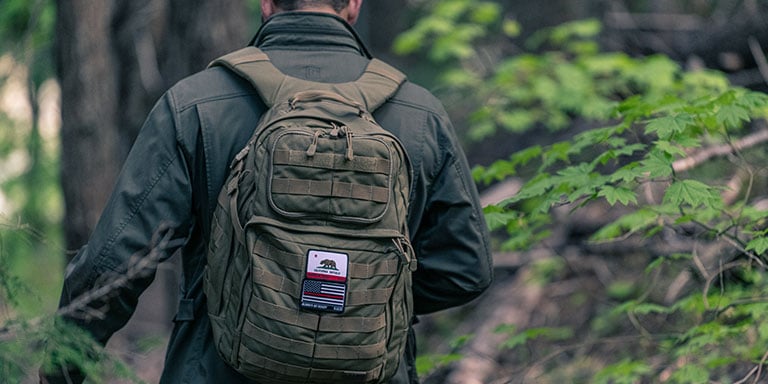How to Build a Personal Survival Kit: The Complete Guide

Knowing how to survive in the wild with few or no tools is an extremely valuable skill, but it's not one you'll want to test in a life or death situation if you can avoid it. A versatile survival kit, full of tools that you are comfortable using, is an essential part of being prepared to survive in harsh conditions.
The Basics of a Survivalist's Toolbox

A great survival kit is one that is well organized, lightweight, packaged efficiently, and suitable for a variety of environments and situations. To some degree, the contents of your ideal kit will vary depending on where you live and what types of emergencies you think are most likely, and this list is by no means exhaustive. Still, some tools are very useful and can justify the space they take up in almost any kit.
A high-end survival knife
It's probably the bread and butter of any good survival kit. With an excellent knife, you can dress game, defend yourself, and craft many other useful tools. Buy the best knife you can – a good knife will justify its cost many times over.
Fire starting tools
You'll need several different types so you can have warmth, relative safety, and cooked food in (almost) any environment. Waterproof matches, a focusing lens and a flint and steel or magnesium striker form a solid trio. These items are small, almost weightless and allow you to start a fire using several different methods.
Tinder
Starting a fire with materials you scavenge from the wild can be surprisingly tricky. Put a handful of cotton or dryer lint in a dry bag and you'll have enough tinder for about half a dozen fires.
Medical supplies
It's a good idea to be very selective when it comes to medical supplies. They can take up a lot of space, and advanced medical equipment is only useful if you are trained in its use. Remember to pack your bag with the bare necessities: a suture kit, a tourniquet, a haemostatic agent, bandages, iodine or alcohol, painkillers and broad-spectrum antibiotics if you can get them. These items are small and light, and they usually don't require much training to use effectively.
A versatile multi-tool
Many survival situations involve building and fixing things. A space-saving multi-tool, like a good knife, easily justifies the space it takes up in your bag.
Water purification tablets
Drinking untreated surface water is never ideal; even finding water in a survival situation is a skill in itself. Water purification tablets are tiny and you can purify several gallons of water with just one bottle.
Canteen
It's always good to have extra water on hand. A sturdy water bottle is an essential tool to have in your survival kit. Consider a collapsible model that takes up little space when empty.
Rope
A mix of nylon rope, paracord and high tensile strength yarn will help ensure you're ready for a variety of climbing, carrying, sewing and knotting needs.
Fishing and hunting supplies
At a minimum, a fishing kit should contain a few different gauges of line, hooks, a small net, and some lures and weights. For fishing and hunting you will need a few small knives for dressing, skinning and boning if you can save space in your pack. Otherwise, your survival knife will do.
Waterproof paper and pencil
Being able to draw maps, draw diagrams and take notes is always useful, even in nature. If possible, make sure your paper and pencil are waterproof - you never know what the weather will be like.
Light sources
Fill your bag with a hand-cranked or battery-powered flashlight, a few flares, and glow sticks. Flares can also be used to scare animals away, call for help, or start a fire if other methods fail. Glowsticks are a great alternative to flashlights when you need reliable, low-intensity light that doesn't rely on bulbs or batteries. Store glow sticks in a hard plastic or metal case so they don't crack in your bag and become useless.
Signaling mirror
A small mirror can be used to signal other people or to start a fire by focusing sunlight. It's a simple but very effective tool that doesn't take up too much space in your survival kit.
Crank radio
A radio that does not rely on batteries is a good way to monitor broadcasts that may contain useful information. However, these devices tend to be bulky and heavy compared to most other items in your survival kit, so depending on your anticipated needs, a radio may not be essential.
Hand crank or solar charger
Assuming your phone or GPS will still be functional in an emergency, you'll need to keep them charged. Crank universal chargers are labor intensive and inefficient, but they are very reliable and do not depend on any other power source. Solar chargers can charge more easily and efficiently, but of course they require sunlight.
Light, non-perishable, nutrient-dense rations
Once you've packed your survival bag with all the other items you'll need, it's a good idea to fill the remaining space with food. You never know what you may hunt or forage, so any food you can take with you is vital. Choose foods high in calories, protein, and fat that don't spoil easily, such as beef jerky, peanut butter, and nuts. Pack your bag with as much food as possible without making it too heavy or bulky.
Ranged Weapons: A Brief Overview

The process of choosing the right ranged weapons for your needs and preferences is exhaustive, but since weapons are an essential part of a survival kit, we'll briefly touch on some general principles that can help point you in the right direction, or maybe to lose a few. additional light on your current weapon choices.
In terms of what you can carry on your person, ranged weapons are big or small. A standard gear setup that works well for most people in most situations consists of your main grab bag, a large weapon, and a small weapon. Carrying two different weapons for different purposes increases your ability to react to different situations without significantly impeding your movement.
When it comes to big guns, most people prefer a rifle, shotgun, or bow. The most popular small arms are revolvers and semi-automatic handguns. Whichever weapon you choose, be sure to keep in mind the four rules of gun safety .
Rifles
Rifles are excellent medium and long range weapons also suitable for hunting and self-defense, but they are less practical in close combat. The charger-powered variants are particularly easy to use.
Shotguns
Shotguns excel in close to medium-range combat and for hunting certain types of game, though their slower rates of fire, low ammo capacities, and generally slow reload times require regular practice to mitigate them.
Bows
Bows have great advantages and major disadvantages over firearms. They are nearly silent and the arrows can often be retrieved and reused, but the art of the bow requires significant practice and bows are impractical in many combat scenarios.
Revolvers
Revolvers are, generally speaking, more mechanically reliable than semi-automatic handguns, although that gap is much narrower today than it was twenty years ago. A revolver's heavier frame with fewer moving parts makes it capable of firing much larger calibers.
Semi-automatic handguns
Semi-automatic handguns have higher ammunition capacities and can be reloaded faster and easier than revolvers, but they are more difficult to master and generally cannot fire rounds capable of reliably knocking down large animals such as grizzly bears.
Experiment with different weapons to see which suits you best, and try to cover as many needs as possible with your two choices. For example, if you have a small or medium caliber rifle for self-defense, you might want to pair it with a large caliber revolver with high knockdown power for big game hunting. If you choose to carry a bow, consider a high-capacity, semi-automatic handgun that can fire quickly.
Whatever weapons you choose, be sure to think about where you will carry them on your person, especially in relation to the survival bag you have chosen.
How to choose a survival bag

The ideal survival bag is one that is durable and roomy without being bulky. It should also fit your body comfortably and have plenty of compartments to organize your supplies. The amount of weight you can carry without sacrificing much mobility also matters. If you're 5'6" and lean, you'll probably choose a different bag than you would if you were 6'4" and built like a tank. The general principle here is to pick a bag that holds as much stuff as possible without hurting or prematurely tiring yourself out .
Whatever size bag you choose, look for one made of thick, durable fabric like canvas, cordura, or ripstop nylon. Pay special attention to seams and seams - do they look thick, tight, evenly spaced and able to hold up in harsh conditions? Also check the buckles - are they cheap plastic or something heavier like aluminum?
It's best to choose a bag with sturdy, durable zippers, or no zippers at all. Zippers tend to break down, especially when they get wet, dirty, and left out. If your survival bag zippers fail, you may end up with something closer to a square of fabric than a bag. Choosing a bag with only straps and buckles largely eliminates this worry.
Hip and chest straps on a survival bag are optional. If it's a large bag that you intend to pack with heavy supplies, additional support can help reduce back pain. Smaller and lighter bags usually do not need such straps.
Finally, make sure your survival bag has enough separate compartments and pockets to organize everything inside.
Tips for packing your bag efficiently

There's more than one right way to pack your survival bag. As long as you use the available space efficiently, know where everything is, and can access essential supplies quickly, the rest is up to your preference.
That being said, there are a few general tips that can help you pack like a pro:
-
Put heavier items at the bottom of your bag with lighter items on top.
-
Whenever possible, put small items and containers that you don't need immediate access to in other containers that would take up space anyway (for example, put your fishing supplies, tools ignition and your signal mirror in your first aid kit) .
-
Group supplies into different compartments by category, such as food, ammunition, and medical supplies, unless space efficiency dictates otherwise.
-
Reserve easily accessible exterior compartments for items you may need quick access to, such as tourniquets, flares, and extra ammunition. Ideally, choose a bag with a few pockets that you can reach without having to remove or adjust the bag.
-
Use straps, tape, zip ties, or bungee cords to bundle loose items and secure them inside your bag so they don't scatter or migrate to other pockets during as you walk.
-
Roll loose items into extra blankets or clothing to keep them together and to carry more stuff in the same space.
-
Tie bulky and lightweight items such as bed sheets and rope to the outside of your pack to save valuable interior space.
-
Save even more space in your pack by adding a vest or shoulder strap to your loadout.
Pack and unpack your bag regularly and practice finding certain items quickly so you have speed on your side when you need it. Also, be sure to periodically inspect your bag and its contents for wear or damage. Establish a schedule for replacing medications and other perishables as they expire. Finally, take the time to regularly practice using the tools and devices you carry.
Hopefully this guide has been helpful in highlighting the most important aspects of building and maintaining an essential survival kit.
0 comments